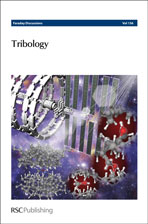Transition metal dichalcogenides belong to one of the most developed classes of materials for solid lubrication. However, one of the main drawbacks of most of the self-lubricating coatings is their low load-bearing capacity, particularly in terrestrial atmospheres. In our previous work, alloying thin films based on tungsten disulfide with non-metallic interstitial elements, such as carbon or nitrogen, has been studied in order to improve tribological performance in different environments. Excellent results were reached with the deposited coatings hardness, in some cases, more than one order of magnitude higher than single W-S films. In this work, W-S-C films were deposited with increasing Cr contents by co-sputtering chromium and composite WS2-C and targets. Two films were prepared with approx. 7 and 13 at.% of Cr. Alloying with chromium led to dense films with amorphous microstructure; the hardness and adhesion was improved. Sliding tests were carried out in dry and humid air using a pin-on-disc tribometer with 100Cr6 steel balls as a counterpart. To analyse the sliding process, the surfaces in the contact were investigated by X-ray photoelectron spectroscopy (bonding), scanning electron microscopy (SEM), transmission electron microscopy (TEM), and Raman spectroscopy. Surface and sub-surface structural modification of the coating and composition of the transferred tribolayer are discussed in detail. High friction in humid air was attributed to the absence of a well-ordered WS2 sliding interface. On the other hand, the existence of such an interface explained the very low friction observed in dry air.
You have access to this article
 Please wait while we load your content...
Something went wrong. Try again?
Please wait while we load your content...
Something went wrong. Try again?

 Please wait while we load your content...
Please wait while we load your content...